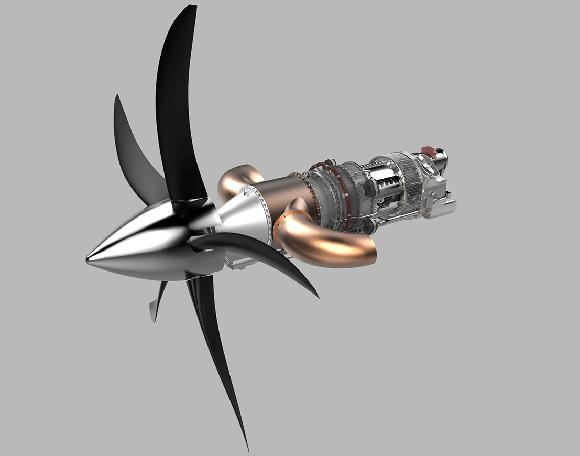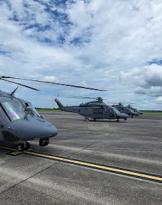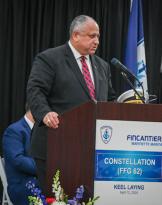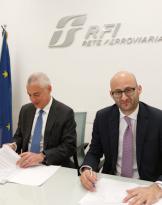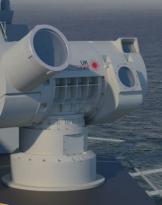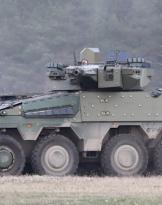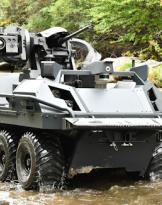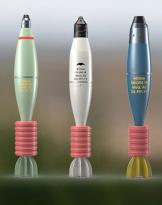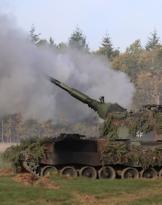The market for turboprop aircraft engines is about to benefit from a "new arrival" that for content, seriousness of the manufacturing company and perfect correspondence to the most modern project requirements will put a strain on maintaining the ownership of the market by those who 50 years if it is divided.
To be honest, an attempt to insert a product with interesting contents, in this market, was already done by Alfa Romeo Avio with the AR318 turbine, and its non-realization represented an important wasted opportunity for Italian industry.
At the time of that project, Alfa Romeo Avio was still a fairly autonomous and certainly small company, completely independent from AR Auto and mainly owned by IRI and Alitalia (therefore by the State and with more national than global market projection). The presence of Fiat AVIO and General Electric was too small to be able with its experience and credibility to find the deserved placement of this interesting national product which was proposed as a competitor of giants such as Pratt & Whitney Canada and Allison. These, with their respective PT6 and Model 250 turbines, were (and are) the undisputed masters of a certain market: general aviation and "light" and military commercial aviation, made up of tens of thousands of aircraft.
It's been half a century since the design of those engines, and technology has made great strides, offering new tools for design and industrialization, so General Electric and AVIO (former FIAT avio) can now redeem that good opportunity wasted.
If on the one hand unquestionably sorry that next to (or rather, above!) To these names there is no longer the historical and glorious Alfa Romeo, the call General Electric or AVIO is synonymous with great chances of success. Suffice it to say that they are at least on a par with the other two American protagonists already mentioned, to understand that there will be problems of credibility and firmness, presence and partnership to be resolved to win over important customers.
Not to mention the advantage of having gained in the meantime an enormous experience with other turbine engines (of equally commercial success), from which to share key elements of design and construction details, in a modular / synergistic design regime.
In fact, the new GE Aviation ATP engines inherit from GE T700 / CT7 (100 millions of flight hours of which more than 5 in hot / extreme environments) the general architecture and the configuration of the compressor, while the advanced aerodynamic study is derived from the latest versions by CF6 engines (best-seller in commercial aviation) and finally the turbine cooling technology comes from the experience of GE Passport engines.
 At the moment there is already an important launch customer: Textron, which has chosen this type of turboprop engine for its new Cessna "Denali" aircraft.
At the moment there is already an important launch customer: Textron, which has chosen this type of turboprop engine for its new Cessna "Denali" aircraft.
This first user presents himself as a "competitor" of the Soca TMB 700 and the Pilatus PC-12, very common aircraft in the "general aviation" especially in non-European airlines, where there is no limitation to not being able to carry out public transport business according to the rules of instrumental flight.
This may already seem a first limit, but in reality it is not. Outside Europe, where there are large spaces to cover and where there is a diffusion and a culture of different aerial vehicles, these machines sell very well and are very widespread.
But coming to analyze things of our interest, it should be noted that there is also another type of market much closer to our home: the military basin, which in the power class of 850-1600 sHP, where GE Aviation ATP engines could be appreciating consistently, mainly consists of training aircraft and APR (Remote Piloted Aircraft, more commonly called "drones").
The market therefore exists, and it is nationalistically nice to know that there is a partnership between General Electric and the Turin-based AVIO AERO, which will see it as the reference point for the production of these engines for the military market. In a certain sense it is as if the previously mentioned lost opportunity of the past were redeemed.

In terms of opportunities for Italy, it is therefore easy to imagine what an adequate positioning in the military market of these new engines can bring.
It is not known if the AVIO AERO of Turin will also have its own serial production in addition to the team responsible for the development of variants intended for the military market, but certainly be invested with this responsibility for such a particular and demanding market as the military , will involve such involvement as to be considered an important opportunity. Regardless of the involvement of AVIO in the activities serving the air forces, the Electric Generator in Italy has other structures involved in the production of components with "additive manufacturing" technology (Florence, Cameri, Talamona and again in Turin) which is the strong point of the realization of these engines.
All this means that the commercial success of these engines are linked to highly qualified employment opportunities not to be missed, collaborations with universities and, in essence, an important boost in industrial technological progress in our country.
In fact, while computer-aided design (CAD), together with modular / synergistic design, have been mature and widespread design methods for a few decades, the construction with the "additive manufacturing" method represents the "state of the art" of the CAM (Computer Aided Manufacturing) production, but it is the prerogative of a few industrial giants at the highest level of technology.
It is extremely encouraging (especially considering the aforementioned lost opportunity in the past) to know that there is a partnership in place that will see the headquarters of GE Aviation ATP production destined for the military market in Turin. We used the Anglo-Saxon term ("additive manufacturing"), not using the Italian term "3D printing" in order not to run the risk of trivializing a production process destined to become a real industrial revolution that in the very near future we will all see (there is already a car manufacturer who shares - in addition to the propeller that has in the emblem - this production methodology).
This process "allows to move from the CAD project (realized in its most efficient form independently of the complexity that can derive) directly to the finished MONOLITHIC piece, producing details otherwise unattainable with the most advanced traditional mechanical processing techniques. compromise between project requirements and its physical realization.Welding, assembly and related costs and processing times are eliminated, production rejects, procurement times and stocks are reduced, while creating extremely complex parts for maximum operating efficiency. certification times are also reduced, which in the aeronautical field are always quite long.
 To give tangible data, in GE Aviation ATP engines we move from 855 parts made with conventional mechanical machining to 12 components made with the "additive manufacturing" method
To give tangible data, in GE Aviation ATP engines we move from 855 parts made with conventional mechanical machining to 12 components made with the "additive manufacturing" method
Translated into practice, this has allowed us to realize, in the engines we are talking about, high-pressure turbine blades with monolithic structure and cooled from the inside by a flow of cold air which "exudes" on the outside while remaining adherent to the blades. It's technology already in use for at least 40 years on jet engines, it's true, but it's the first time that it's done on a turboprop. This solution, together with the aerodynamics of the turbine blades themselves and the compressors connected to them, made it possible to go in complete safety up to the total compression ratio of 16: 1.
The advantages derived from it are:
- reduction of the total weight of 5%
- reduction of specific consumption1 of the 1% (which is not much when it comes to aeronautical consumption)
- increase in 10% of power at altitude
- 20% less fuel consumption per flight
- increase in TUB 33%2, which rises to 4000 h
Constructive elements of these new engines are:
-
double-stage high-pressure turbine
-
turbine at 4 low pressure stages (3 axial flow and 1 centrifugal flow). All titanium and double stage with variable stator blades)
-
inverted flow combustion chambers and injectors optimized for the reduction of polluting emissions
-
double redundancy of critical installations give the best benefit for safety in the remote piloting of the APR
Other details (innovative because in axis with the driving shaft) allow a considerable reduction of the frontal dimensions of the engine, once again to the benefit of the possible military applications and in the remotely piloted aircraft:
-
propeller gearbox (specific for the power level of the single motor)
-
the arrangement of the "accessory box", with power and always in line with the drive shaft
-
integrated management system of engine and propeller that allows the pilot to use a single lever control lever
 Of the two main categories of military aircraft that could take advantage of these new engines, remotely piloted vehicles will in fact benefit more. Especially because they are used in operational scenarios, where the best performances make the difference and for which a considerable process of development of these media is underway, a subject often "overlooked" due to the need not to attract the attention of a certain journalism " cassette ", maybe not too far from Turin.
Of the two main categories of military aircraft that could take advantage of these new engines, remotely piloted vehicles will in fact benefit more. Especially because they are used in operational scenarios, where the best performances make the difference and for which a considerable process of development of these media is underway, a subject often "overlooked" due to the need not to attract the attention of a certain journalism " cassette ", maybe not too far from Turin.
We are well aware of the high level of effectiveness demonstrated by the 'Predators' and their successor 'Reaper'3, as well as the fact that aircraft can be built that combine the advantage of turboprop characteristics (take-off and landing spaces and steepness of the respective trajectories, less infrared tracking), as well as much more favorable fuel consumption than the jet at low altitude. And we also know that fast turboprop aircraft can be built at high altitude, as Piaggio demonstrated with the P 180 (and the remotely piloted aircraft P.1HH derived from this.
We also know that the history of military training has already taught that the "jet ab initio" philosophy can lead to dangerous training gaps.
 So if our Aeronautica Militare also really decided to have the M-344 produced, there would be many other potential customers elsewhere among the operators of basic training aircraft, turboprop, such as:
So if our Aeronautica Militare also really decided to have the M-344 produced, there would be many other potential customers elsewhere among the operators of basic training aircraft, turboprop, such as:
-
Pilatus (PC7, PC9, PC21),
-
Beechcraft T-6 "Texan II"
-
Embraer (EMB 312 "Tucano" and 314 "Super Tucano"),
-
KAI KT-1 "Ungbi"
and their successors.
A possible installation on one of our SF-260TP or a possible transformation from SF260 would need a weakened version
Turin was the cradle of the industrial, aerospace and military history of Italy: the choice by General Electric of a partner like AVIO AERO for such an important company seems to have been born under a good star also from the historical point of view.
1 SPECIFIC CONSUMPTION: quantity of fuel used for each kilowatt (or horse) of power supplied in the time unit g / CV / h
2 (Time Between Overhaul, ie time between a review and another)
3 also known as Predator B

